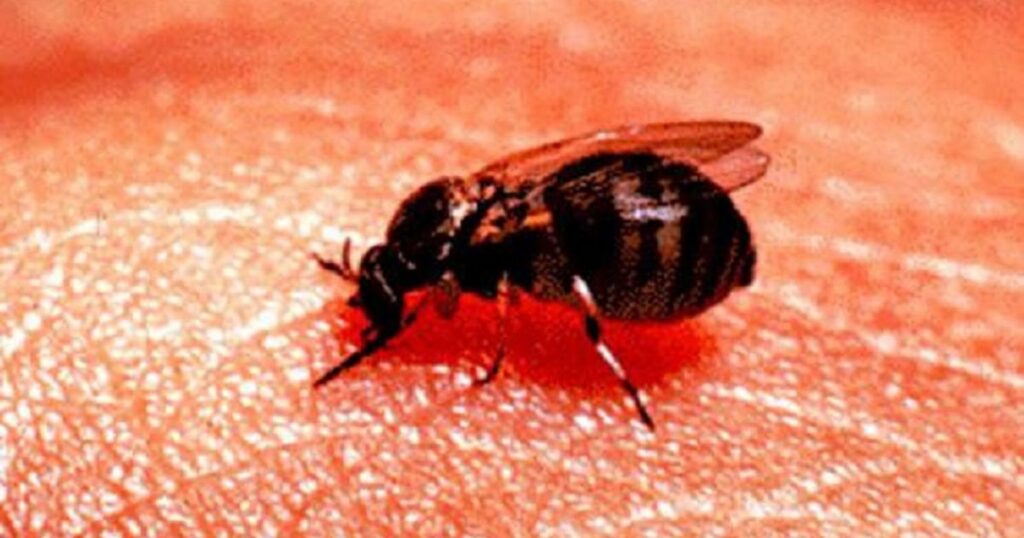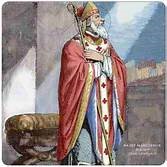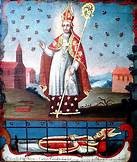AKA: Mum’s Blog!
Index
12th July 2024 – Glastonbury Special
28 June 2024 – Election Special
06 November 2022
When I was younger, I used to wear my poppy with pride. My paternal grandfather, Reginald Ernest Harris, fought in both World Wars: he joined up, underage, for the First, and was wounded and imprisoned in the salt mines of Silesia; he became a career soldier, and as a Captain was for a time Acting Governor of Sardinia in the Second. So I felt I had a vested interest. (My maternal grandfather, although on the other side, was never a combatant; he was drafted as an army mechanic in Finland).
Remembrance Day, the 11th day of the 11th month, was first observed in 1919 to honour those who had fallen in the First World War, and the poppy was chosen as its emblem in 1921 after the poem In Flanders Fields by John McCrae, which begins: In Flanders’ fields the poppies blow/ Between the crosses, row on row… After 1945, it commemorated the dead of two world wars, and has expanded to cover those of all the wars since.
Respect for the dead is fine and even necessary – lest we forget – but the poppy should not have to bear the burden of the living. Gradually, wearing the poppy has morphed into showing unqualified support for the Armed Forces in all of their endeavours. We are made to feel unpatriotic if we don’t adulate these ‘heroes’. Quite apart from this viewpoint being seriously naive, there is also the never-mentioned fact that these are people doing a job which they have chosen and are paid for; unlike a huge proportion of the dead in the two world wars who were conscripts. If they chose not to fight, as conscientious objectors, they were labelled cowards. As if courage is only to be found on the battlefield.
There is in fact an Armed Forces Day for those who wish to acknowledge their service, and a charity, the SSAFA, to see to their well-being. The poppy should not be co-opted into an expression of enthusiasm for the military. It has already enough to bear: in 2014 a sombre bloke at the Menin Gate, where the Last Post is sounded every day, stated that for it to be played for every soldier who died would take until 2610. It started in 1927. Until and unless the poppy is returned to the memory of those who deserve it – including the conscientious objectors – I will not wear one any more.
In a formidable coincidence, three of the saints whose day is 11th November are warrior saints. The first is St Menas, a camel herder from Egypt in the 3rd Century, who fought in the Roman army, then left to become a hermit; he was arrested, tortured, and executed for preaching Christ.
Then there’s St Mercurius, also from the 3rd Century, who at age 17 enlisted in the Roman army. He became famous as a hero swordsman; in Arabic he was known as Abu Sayfain – two swords – one of which was reputedly given to him by St Michael. A Christian, he was beheaded aged 25 for refusing to sacrifice to the Roman Gods.

The third warrior saint is St Martin of Tours, who is ironically the first conscientious objector in recorded history. Although a Christian, he served in the Roman army in the 4th Century (after the persecution of Christians was over) and is perhaps most famous for cutting his cloak in half to give to a beggar. He had a crisis of conscience and refused to fight any more, turning down his pay. He was charged with cowardice and jailed; he offered to go unarmed in the front of the troops, but before his superiors could take him up on this, the invaders sued for peace, the battle never happened, and he was released from military service.
He eventually became a much loved and well-travelled bishop, and after his death his cloak became such a famous relic that our words chaplain and chapel are named after it (capella), because of the shrines built to house it. He is the patron saint both of conscientious objectors and of soldiers.

02 June 2022 (Jubilee Blog)
Sound the ram’s horn trumpets! That’s what ‘jubilee’ actually means: in the Bible, every 50 years there was a celebration of restoration and emancipation, proclaimed by these trumpets (‘yobel’ in Hebrew). ‘Yobel’ led through Late Latin jubilaeus annus (year of jubilee) through Old French jubilé to our jubilee.

Thus a jubilee was originally a religious celebration, and in the Catholic Church jubilees began to be celebrated formally in 1300AD; they are years of forgiveness of sins and reconciliation, and are held every 25 years (presumably to ensure that more people actually get one during their lifetime). The last one was in 2000.
If you hold to the original 50 years, there aren’t many monarchs, British or otherwise, who have managed to keep their backsides on their thrones for that long. So far, only Henry III (57 years), Edward III (51), George III (60), and Victoria (64) have achieved this before Elizabeth II (70 and counting). It’s not known whether Henry or Edward celebrated jubilees, but for George’s golden Jubilee in 1809 there was a grand fête and fireworks display at Windsor, and Victoria had a royal banquet and procession through London in 1887, and ‘many celebrations’ in 1897 at her Diamond Jubilee. In the tradition of wedding anniversaries, the present Queen has been accorded a Silver Jubilee (1977), Golden (2002), Diamond (2012), and the present Platinum. So far; she has Oak, Wine, and Stone to come.
And people have gone Platinum Jubilee mad; as Twitter says wryly, ‘98% of Britain is bunting’. In addition to the union jack cupcakes and doughnuts, you can get a corgi cake from Morrisons (£6.99), a crown biscuit (£25), colour-changing gin (£29.99), and a half-body cut-out of the Queen in full regalia, to adorn your party.

There is even Aldi’s Kevin the carrot in drag, yours for £3.99 instore. My favourite is A Very British Problem’s white T-shirt with royal purple lettering proclaiming: WELL THIS IS FUN. In Ross-on-Wye the serial knitters have kitted out the market place post box with a royal tableau, including corgis.




The pièce de resistance, however, has to be the imposition of the Queen’s images, one for every ten years of her reign, on to the stones at Stonehenge. One wonders what message the perpetrators were attempting to convey; but the response has been hilarious, from ‘Thronehenge’ to ‘completely unhenged’.

For sanity’s sake, don’t see these as the outward symbols of a collective psychosis centred on a small, ordinary, mortal woman who is made to bear the dream of a glorious, all-conquering past that never was. See them instead as lovable expressions of a national identity, and you’ll survive the Jubilee.
It appears that Her Majesty has even co-opted God for the celebrations; this Sunday is Pentecost, but it’s likely that the jubileeing crowds will consider the descent of the Holy Spirit upon the Apostles of little importance compared to seventy years of the same Queen.
If not of jubilees, there is in fact a patron saint of queens: her namesake Elizabeth of Portugal, who lived in the 14th century. She was said to be diligent and pious, and ‘a successful peacemaker between members of her own family and between nations’. Queen Elizabeth II should be happy with that.
29 May 2022
Ah, the joys of coming summer… sitting here looking at the rays of the sunset sun on the sycamore tree, illuminating thousands of insects dancing around it… biting insects. You know how they say that you’re never more than eight feet away from a rat? Make that eight inches (probably less) from a biting insect in summer. The Royal Entomological Society states that for every human on earth, there are approximately 1.4 billion insects. And you’re bound to be bitten this summer by a fair few of yours.
One of those prevalent at the moment is the Blandford fly, so called after the town of Blandford Forum in Dorset, where in 1972, some six hundred people were estimated to have visited their doctor for treatment of insect bites during a four-week period.

These tiny creatures produce a painful bite out of all proportion to their size; the golfer Ian Poulter once had to pull out of a tournament after having been bitten by them. They will bite your ankles, legs, and groin for preference, and have been known to bite through jeans and protective wear. Be warned. Thankfully, they will only be around until the end of June. This year – they’ll be back the next.
The UK also had to deal with a grasshopper infestation last year, which broke all records. Experts say that this was caused by the prevailing warm, dry conditions, and to expect more in the future. Fair enough, they don’t bite, but en masse they can be completely off-putting if you want to have a picnic or just stretch out on your lawn.
You can also expect hordes of flying ants later in the summer, and they do bite. Not to mention mosquitoes, midges, gnats, horseflies, wasps, et al. By the way, some research shows that mosquitoes prefer biting people with blood type O rather than A or B. Unless you’re a secretor. Roll on summer.
At least the UK was spared the invasion of Brood X which hit the USA last year. Every 17 years, billions – some say trillions – of cicadas emerge from underground and go through four stages before flying, mating, and dying.
They are essentially harmless, except to crops and young trees, and insectophobes, who will have nightmares for 16 years until the next occurrence.

Interestingly, there is a patron saint for insect bites: St Narcissus of Jerusalem. He was a second Century Bishop of Jerusalem who was accused of an ‘unimaginable crime’, and although he was cleared of the charge, he decided at the age of eighty plus to become a hermit in the desert. There he grew a ‘leathery’ skin which was impervious to insect and scorpion bites. After several years, he was asked to return to his diocese and resume his duties, which he did, eventually dying at the age of 117. Presumably his tough skin protected him from further slander as well as insect bites.
In a truly bizarre coincidence, his namesake St Narcissus of Gerona is also associated with insects. This Narcissus was a 4th Century bishop whose tomb in Gerona was desecrated by the Burgundian army in 1286. The soldiers broke open the tomb and a huge swarm of stinging flies came out, causing such havoc that the army fled and the city was saved. St Narcissus of Gerona is now the patron saint invoked against mosquitoes and stinging flies.

They share the same feast day, 29th October.

Editors Note:
This interesting fact came to light while communicating with Caroline about the etymology of ‘narcissus’:
In Greek mythology, Narcissus was a beautiful young man who fell in love with his own reflection, and turned into a flower. The name Narcissus comes from the Greek 'narke', numbness (same root as narcotic), which some think is from the powerful fragrance of the flower, others from the poisonous bulb. Maybe insects were attracted to the flower...?
10 April 2022
The Ukranians could do with all the help they can get, so they may be encouraged by the fact that their patron saint is a total bad-ass. Saint Olga of Kiev was the wife of the ruler of Kiev in the 10th Century, and when her husband Igor was murdered by the Drevlians, a vassal state, she devised an awesome revenge.

As she was the ruler of Kiev during her son’s minority, the Drevlians sent 20 statesmen by boat to Kiev to ‘persuade’ Olga to marry her husband’s murderer, Prince Mal. Olga suggested that they demand to be carried in their boat through Kiev, to show off their arrogance. They complied, and Olga’s subjects carried them through the city to a large pit which had been dug on her orders; they were dropped in and buried alive. Boat and all.
Olga then sent a message to the Drevlians telling them to send their most distinguished men, that she may go to their Prince with honour. Blissfully unaware of the fate of the first lot, these arrived, and were escorted to the bathhouse so that they could refresh themselves before being received. Once they were in, Olga had the doors barred and turned up the heat – so much so that they burned to death.

You’d think that the Drevlians would have begun to smell a rat by now, but when Olga asked them to prepare great quantities of mead for a funeral feast in the city where her husband had been killed, so that she could come and mourn over his tomb, they happily agreed. So she arrived there with her followers, encouraged five thousand Drevlians to get legless, then slaughtered them.
Not surprisingly, this led to all-out war, and Olga devised her last revenge while besieging the Drevlian city of Iskorosten. She told the inhabitants that she would go in peace if each household sent her a tribute of three sparrows and three pigeons. Relieved to have been let off the hook at small cost, they did so; and she told her soldiers to tie a piece of sulphur to each bird’s leg on a trailing string. At nightfall, the sulphur was set alight and the birds released; returning to their homes, they set fire to the whole city, causing the people to flee. Naturally, Olga’s encircling army slaughtered them.

After that, she decided she’d had enough revenge, possibly because there were very few Drevlians left, and set out to become a saint. Her grandson, Volodimir, became one too. But that’s another story. You can see why she’s held in the deepest respect; she must be the most bloodthirsty saint in the whole of the Christian calendar. Her feast day is on 11th July, and let us all pray that this appalling war is over long before then.